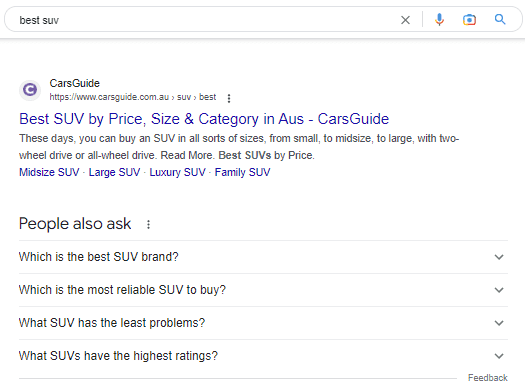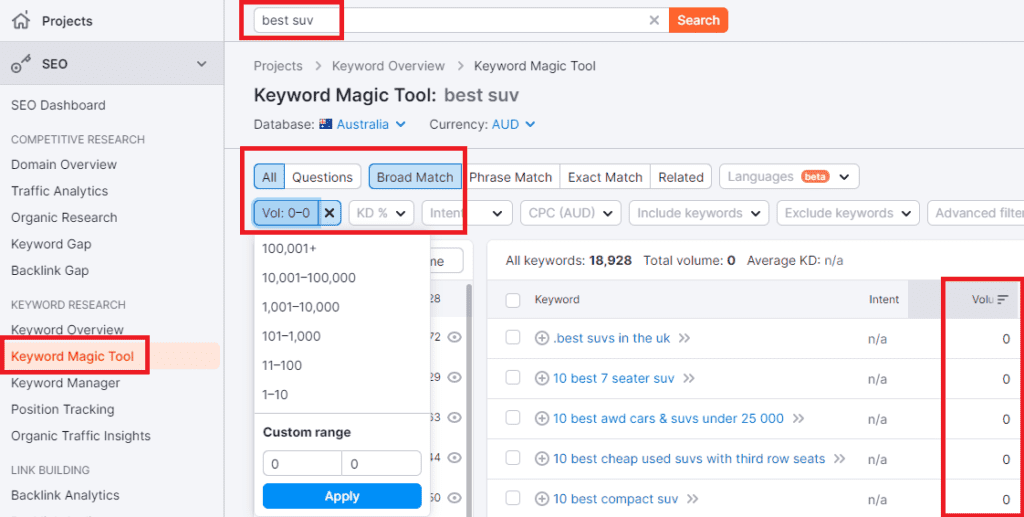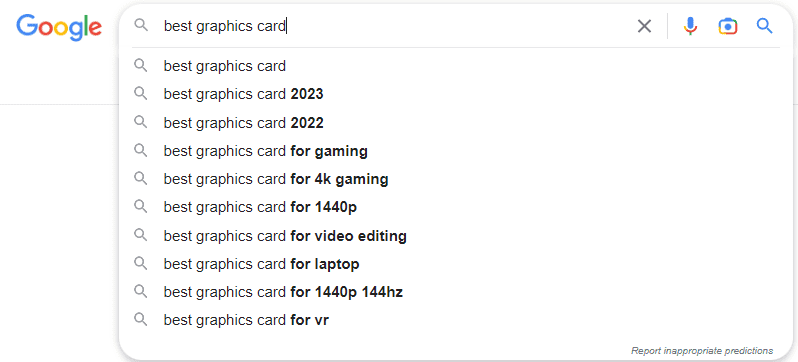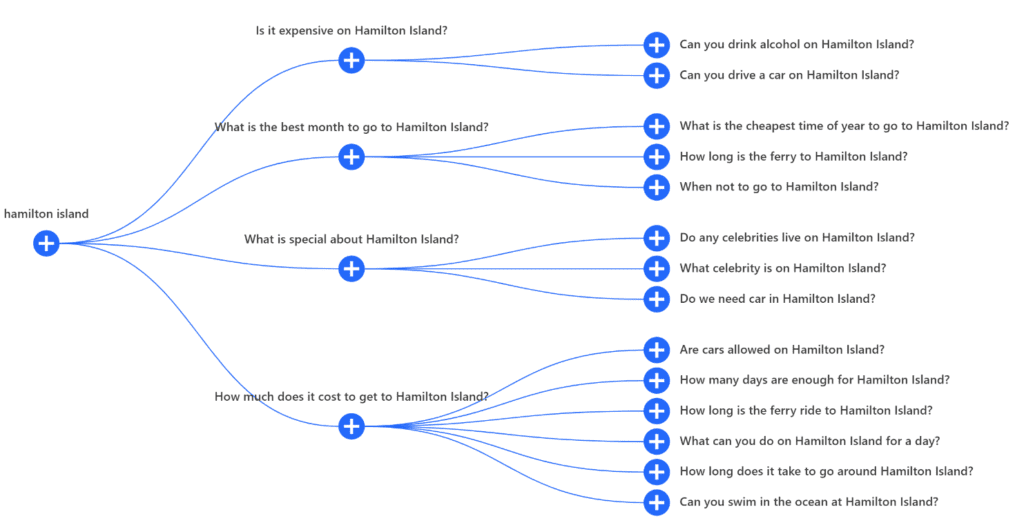When you’re preparing an SEO strategy, there are a few things to consider at the very start of the keyword research process.
This includes:
- the specific types of content that you are going to produce
- the tone of voice that you are adopting in your work
- the specific keywords that you are targeting
And when it comes to keyword specifics, zero search volume keywords can be a great starting point for SEOs.
So in this post, you’ll find out more about what zero search volume keywords are, some of the reasons to target these keywords and some ideal techniques for optimising your work to hit high ranks for these keywords.
Table of Contents
What are zero search volume keywords?
Zero volume keywords are those that are are reported to have no monthly search volume in keyword tracking tools.
However, this doesn’t mean they drive no traffic at all.
Search engines track the number of searches and levels of activity that different words and phrases have on a day-to-day basis, with higher levels of activity tending to attract more focus, as there is a guarantee that are people looking for that information more consistently.
Typical zero volume examples include:
- Long-tail keywords with very specific phrases
- Brand-new, innovative terms
- Keywords related trending new topics
- Typos
Here are some zero volume keywords that may fall into the above categories:
- Long-tail or specific: “meal prep plan for male football athletes”
- New: “virtual reality event seats”
- Trending: “Wrexham AFC promoted”
- Misspellings or typos: “receipe ideas”
Targeting these keywords as an alternative can be a riskier strategy due to the fact that there isn’t any certainty of traffic returns.
But there are some advantages of opting for a zero search volume keyword.
There are also some ways to find winners. Let’s explore more.
Why target zero search volume keywords?
There are several reasons that companies and marketing teams can target zero search volume keywords as an alternative to some more popular keywords that are in their industry.
Some of the main reasons for doing so include:
Lower competition
One of the main reasons that people target keywords without any search volume is that there can be lower ranking competition.
Search volume data points in keyword research tools are far from perfect, so there are likely terms that simply go unnoticed or even neglected by SEOs in keyword research tools.
A key point is that these terms also often serve as a proxy to higher search volume, generic keywords, via Google’s “People Also Ask” SERP feature. I’ll touch on this below.
So generally, you have far less competition and can still get a decent amount of traffic that from zero search volume keywords.
Piggy back off high volume keywords
Although a zero search volume keyword has relatively little traffic, it can be closely related to one with an incredibly high volume of searches. Example:

In the above “People also ask” results:
- 2 of these have 10 volume
- 2 of these have 0 volume
- the generic seed phrase “best suv” has 2,400 volume
Would it then be safe to assume that there are far more than 20 people getting their eyes on those 4 terms each month, given the seed phrase has 2,400 people searching a month?
You bet!
The volume here as a by product is likely much higher than 0 or 10.
With the above 4 keywords, you have a good chance of a getting different source of traffic to the rest of the competition, whilst also creating topically relevant content to the seed keyword.
Modifying your target keywords so they are either synonyms of or directly related to those with large levels of traffic means that you retain the potential for high traffic whilst still avoiding the issue of dealing with competition from larger websites and existing brands in the space.
And lastly, if I want to rank highly for “best suv”, I am going to need to high topical authority on that subject. Which means:
- I need to answer all those People also asked questions anyway
- The content I produce based on those above 4 keywords is highly relevant and very useful.
- I need to be ranking for the lower hanging fruit before Google ranks be #1 for the top term
Easier to rank for
Improving your SEO performance is an important first step in your company’s growth.
Ranking high for one search term means that you gain a certain degree of topical authority as an organisation, helping your website rank better for other related terms.
This is because search engine algorithms account for factors such as website topical relevance and authority.
It’s not always the case, but generally:
- As there is less competition you naturally rank higher for a zero search volume keyword
- The content you need to produce can often be short and sharp FAQs
- Many zero volume terms can be combined into one article
Zero search volume keywords also help site performance beyond the articles that they apply to.
How to find zero search volume keywords
Finding keywords with a high search volume is a relatively simple process, with trends becoming apparent as time goes by.
However, finding low search volume keywords is more of a challenge, as these are naturally more obscure keywords and topics that people don’t think about immediately in their work.
Some ideal methods for finding keywords with minimal search volume include:
Keyword research tools
The first way of trying to find zero search volume keywords is through the use of keyword research tools.
Completing keyword research involves searching for specific keywords and topics, finding the volumes of traffic for each of these keywords and comparing them against one another.
Some tools also use a comparison feature, which examines some related terms and words, seeing the traffic that each of these key terms generates.
There are several keyword research tools available for users, each of which has its own unique features.
Some of the options to choose from when looking for a keyword search volume tool include:
SEMrush
SEMrush is a content marketing and SEO tool designed with one simple concept in mind: SEO marketing doesn’t have to be a difficult process.
This tool examines various keywords, the existing SEO performance of a website and the SERP performance of a site in order to see how a business performs in organic search.
Use SEMrush’s “Keyword Magic Tool” to focus on uncovering zero volume keywords, you can find terms and words that suit the zero-volume.
Here are some settings to use:

On-Page SEO Terms
ahrefs
This all-in-one SEO toolset can be used to analyses and audit websites.
In addition, it offers a powerful keyword research tool that helps you find the low-volume search terms we are looking for.
You can use ahref’s “Keyword Explorer”, or the “Organic Keywords” tab with “Site Explorer” section. to dig into zero volume queries.
ahrefs and SEMrush function similar here. Pick your poison.
Google SERPs
SERPs are Search Engine Results Pages, and refer to the response that a user gets from their search engine (in this case Google) after completing a search.
A SERP has dozens of different features to consider, but at its core, this concept is the same as it has always been – a list of results that the user receives that might be relevant to what they are looking for.
Using a SERP effectively is a must for an SEO marketer, with several features offering you insight without having to use external tools. Two features that are perfect for a marketer to consider include:
Google’s Auto complete function
The auto-complete function is one that is initially designed for users to make the most of when trying to find more information about a topic, but is also the perfect tool for a marketer looking for keywords.
If you initially enter your basic term into the Google, take a look at the auto-complete searches that are available to you.
Look at the search volumes for each of the terms and take advantage of the ones that are relatively low, as these can be targeted to generate more impressions on your website with little competition from other sites.

People Also Asked sections
The “People Also Asked” section comes a little way under the very top of the SERP, and makes some suggestions of what a user might ask that directly relates to the initial search.
This can be the perfect tool to get people clicking on your website without even searching for the keyword in the content, helping the ratio of search volume vs impressions to improve significantly.
By targeting the keywords in these sections, you get your articles seen by more potential readers who then click on your posts and pages without even having to search for the keyword.
Getting your content into the “People Also Asked” section is a surefire way to increase views and impressions without ranking organically for the seed keyword.
If you want a lot of the legwork done for you here, I highly recommend using the keyword tool Also Asked.

Techniques to optimise for zero search volume keywords
There are several techniques that companies use when making the most of their zero search volume keyword strategies.
You can mix and match these depending on their specific industry and individual content strategy, as using the right blend of techniques increases your chances of maximising views and interactions with content.
Some key techniques to implement in your SEO strategy, in addition to the benefits of using them, include:
Utilise a handful of terms
The first technique to implement when looking to optimise your content for zero search volume terms is to use a handful of these keywords all at once.
There are a few ways of doing this, such as:
- including these keywords in subheadings
- within your content
- in image files
You can find many longtail commercial keywords just by phrasing a core keyword around a comparison, best of or review.
This helps you to get as many of the terms as possible into your piece whilst making the content as relevant as possible.
Be sure to avoid overstuffing your content with keywords in these cases though. One sub header mention and one mention in the following body copy is enough..
Take your time on each of the answers and ensure that you fully meet the expectations that a reader might have.
This increases retention and means that people are more likely to stay on the site beyond their initial click, checking out more pages.
Match the intent
The second technique is to match the search intent. The intent of a keyword needs to define:
- the tone of your writing
- the content type (longform, image heavy, video led)
- the content format (longform, list post, how to’s)
Understanding the intent of a keyword means that you guide your work towards specific pieces of information and provide the reader with appropriate content and actions to take throughout.
This is true to very high levels of detail, including getting keywords that match your tone and goals.
Some common intents to match include:
Informational Keyword Intent
Informational content is specifically written to inform the reader about something.
Some examples of informational content:
- Answering a specific question or questions users might have
- Providing a guide on the end-to-end process that someone can follows. This is common for “how to” content.
- A comprehensive explanation of what a concept is, such as this page about optimising your website for zero-volume search terms.
Informational keywords are typically who, what, where, why, how type terms.
Avoid sales-oriented language. This can put the reader off, as it indicates that you have an ulterior motive outside of simply informing them of the topic of their search.
Many informational queries are often reported as having 0 volume. Don’t shy away from them! If the informational keyword makes sense, then use it.
Commercial Keyword Intent
Commercial keywords are best understood as terms people use when investigating a brand, product or service.
Some examples include:
- Brand comparisons: “SEMrush vs ahrefs”
- Best of terms: Best technical SEO tools
- Review type keyword: New iPhone reviews
The goal of content on these pages is to persuade a user to buy a product or use a specific service. Content on these pages typically ends with a recommendation and call to action.
When it comes to zero volume commercial keywords, here’s an exampe:
Target the keyword “24/7 emergency plumber callouts in Sydney” rather than “Sydney plumber”, as this is more specific and likely to match the potential users search.
It doesn’t matter if that exact longtail commercial keyword has 0 volume, as it is semantically relevant to ‘plumbers’, ’24/7 plumbers’ and ’emergency plumbers’.
You can find many longtail commercial keywords like this just by searching for brand comparisons, ‘best of’ terms and reviews.
Summary
Although zero search volume keywords might not ideal at face value, there are a lot of opportunities to take full advantage of when implementing this strategy.
By combining the top level keywords that you use with informational and commercial phrases, you can create highly targeted pieces of content that are sure to convert well!
Recent blog posts
In our blog section you’ll discover more in depth guides and SEO news. Check out some other posts below!